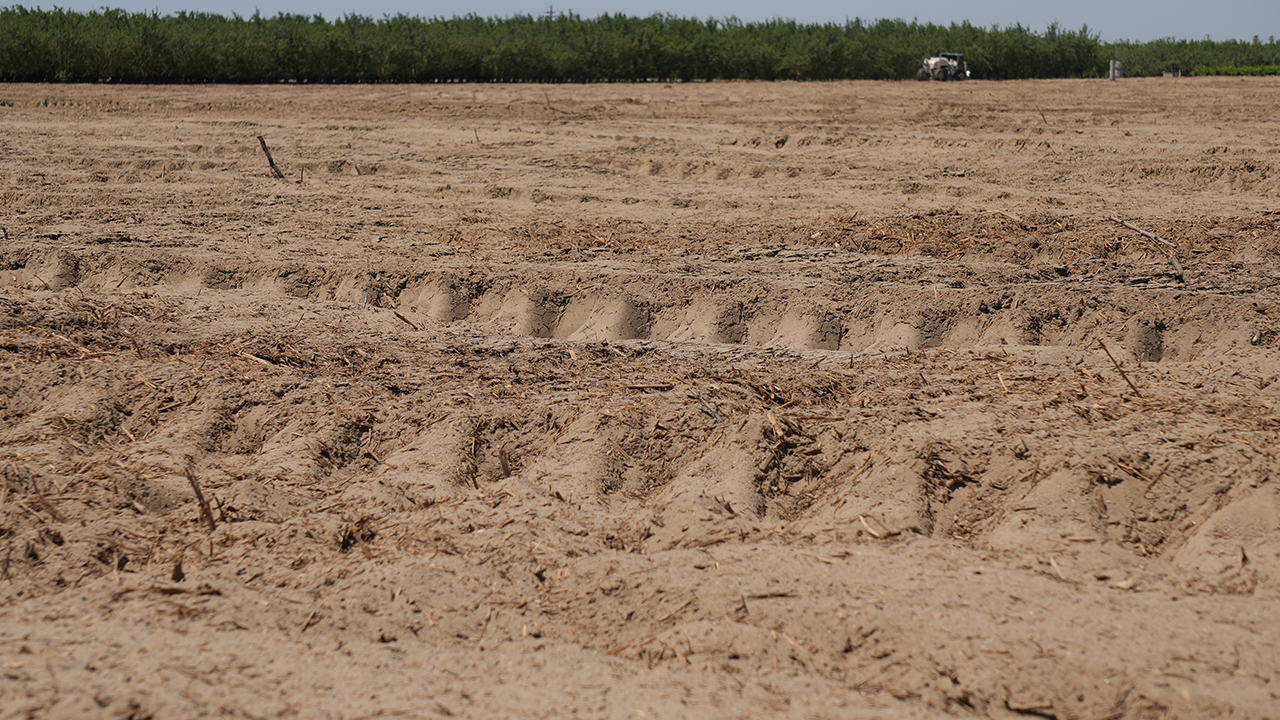The combined impacts of a multi-year drought, anticipated SGMA requirements and reduced reliability of surface water supplies may increase the likelihood of some irrigated agriculture in the San Joaquin Valley to at least temporarily coming out of production. Non-governmental organizations (NGOs) such as the Public Policy Institute of California and the San Joaquin Valley Water Blueprint have estimated that as much as 1 million acres could be removed from production if surface and groundwater supplies don’t become more reliable with new storage and conveyance facilities and practices. This level of irrigated acreage reduction would have dramatic impacts on both the larger economy and individual growers.

The water scarcity has created momentum for new voluntary funding programs for growers facing the difficult decision of taking land out of production. Not all of the programs are available in all parts of the central valley. Many programs are the result of regional planning efforts to simultaneously address SGMA requirements, reduce subsidence impacts and support some amount of continued farming even if in a smaller irrigated footprint, through water trading and other methods.
Typically called repurposing, these programs can provide a regionally planned way to approach fallowing decisions and potentially find new uses for areas taken out of production. The most common goals for these programs are restoring land for habitat and also creating locations for new groundwater recharge projects. Conservation easements for habitat typically result in the permanent retirement of acreage, while some programs in development can pay for temporary fallowing with certain habitat enhancements until farming returns.
If looking to keep land in production, growers can also apply for conservation easement programs that aim to keep land in productive use, such as the California Farmland Conservancy Program, Sustainable Agricultural Lands Conservation Program and the federal Agricultural Conservation Easement Program.
The following are brief descriptions of state and federal programs that almond growers could apply for to capture conservation funding:
Pandemic Cover Crop Program (PCCP)
This program is made available to agricultural producers with coverage under most crop insurance policies. The PCCP is provided through USDA’s Risk Management Agency (RMA), and both reduce producers’ overall premium bills and help maintain cover crop systems. This program isn’t currently accepting applicants in California but could be restarted in the future. Find out more.
Conservation Reserve Program (CRP)
Administered by FSA under USDA, General CRP helps producers and landowners establish long-term, resource-conserving plant species, such as approved grasses or trees, to control soil erosion, improve water quality and enhance wildlife habitat on cropland, including pollinators. In exchange for a yearly rental payment, farmers enrolled in the program agree to remove environmentally sensitive land from agricultural production and plant species that will improve environmental health and quality. Contracts for land enrolled in CRP are from 10 to 15 years in length.
Producers and landowners can also enroll acres in Continuous CRP under the ongoing sign-up, which includes projects available through the Conservation Reserve Enhancement Program (CREP) and State Acres for Wildlife Enhancement (SAFE). FSA enacted a Climate-Smart Practice Incentive for General and Continuous CRP, providing a potential tie-in to almond industry sustainability goals. Find out more.
American Farmland Trust Regional Conservation Partnership Program (RCPP)
Funds are available in the San Joaquin Valley not only for ag easements but also “land rentals” which are modeled after CRP. Projects can include habitat restoration and are ranked based on a tool that prioritizes areas that don’t have a reliable water supply. RCPP broadly promotes the coordination of NRCS conservation activities with partners that offer value-added contributions to address on-farm, watershed and regional natural resource concerns. Find out more.
Wetlands Reserve Easements
For qualifying properties, NRCS will pay for the conversion of agricultural land to floodplain habitat. Find out more.
California Department of Conservation Working Lands and Riparian Corridors Program
Watershed Restoration grants fund the restoration and enhancement of natural resources on agricultural lands and aim to improve climate adaptation and resilience by improving soil health, carbon sequestration and habitat. Find out more.
Multibenefit Land Repurposing Program (MLRP)
The process for growers to receive funding through the MLRP program still needs to be developed for the three pilot areas that were selected for funding in the San Joaquin Valley. Initial funding will be available to growers located in the territory of three Groundwater Sustainability Agencies (GSAs) - Greater Kaweah GSA, Pixley Irrigation District GSA and Madera County GSAs. Find out more.
The Greater Kaweah GSA program will develop a toolbox for assessing and selecting multi-benefit land repurposing activities that protect the land-based economy, manage groundwater supply, provide short- and medium-term drought relief, restore wildlife habitat and provide direct benefits to disadvantaged communities in a critically overdrafted subbasin. Projects described include a significant collaborative planning effort and fallowing to restore habitat on lands least viable for agriculture and that contribute to resource connectivity.
The Pixley Irrigation District GSA program aims to facilitate strategic land retirement, restore habitat and protect and enhance water resources throughout the critically overdrafted Tule Subbasin in a manner that meets regional economic, environmental and social needs. Projects described include upland restoration.
The Madera County GSA program builds on a Sustainable Agricultural Lands Conservation Program planning grant that was used to prioritize land to remain in agricultural use, and land for fallowing, based on recharge potential, soil quality and water supply. Funding will expand the plan regionally and explore the viability of additional land repurposing, such as habitat restoration, while using the majority of funding to provide incentive payments to landowners to repurpose marginal agricultural lands for multiple benefits and water savings. Projects will be focused on land around disadvantaged communities and include repurposing to dryland farming, rangeland, buffer zones, pollinators and hedgerows.
